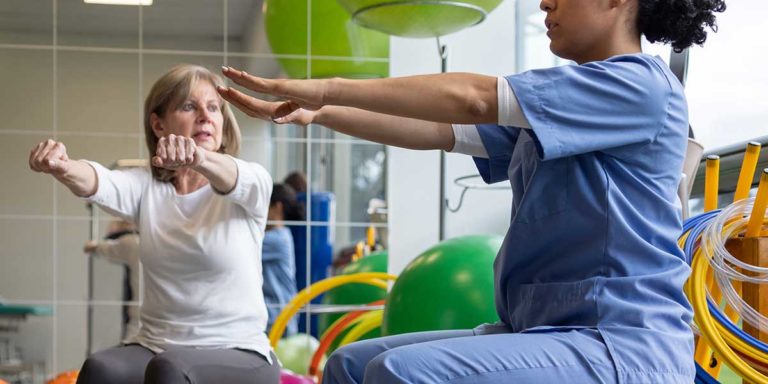Preventing Workplace Injuries: Ergonomics and Physical Therapy Tips
Workplace injuries can have a significant impact on both employees and employers. They can lead to pain, suffering, and lost productivity. Fortunately, many of these injuries can be prevented with the right approach. In this blog, we’ll explore the importance of ergonomics and physical therapy in preventing workplace injuries and provide valuable tips for maintaining a healthy and injury-free work environment.
The Importance of Ergonomics
Ergonomics is the science of designing a workspace to fit the needs and capabilities of the worker. It’s crucial for preventing workplace injuries because it focuses on creating a work environment that minimizes the risk of physical strain and discomfort. Here’s why ergonomics matters:
- Reduced Musculoskeletal Disorders: Ergonomically designed workspaces reduce the risk of musculoskeletal disorders like back pain, carpal tunnel syndrome, and neck strain. By optimizing workstation layouts, seating, and equipment, employees are less likely to experience pain and discomfort.
- Enhanced Productivity: A comfortable and ergonomically sound workspace can significantly boost productivity. When employees aren’t constantly dealing with discomfort, they can focus on their tasks more effectively.
- Lower Absenteeism: Workplace injuries can lead to employee absenteeism, which can be costly for employers. Ergonomic improvements can help reduce absenteeism by minimizing the risk of injuries and promoting overall well-being.
Ergonomics Tips
To create an ergonomically friendly workspace, consider the following tips:
- Adjustable Workstations: Invest in adjustable desks and chairs that allow employees to tailor their workstations to their specific needs. This includes adjusting the height of the desk and the angle of the computer monitor.
- Proper Seating: Provide ergonomic chairs with lumbar support to maintain good posture and minimize strain on the spine.
- Regular Breaks: Encourage employees to take short breaks to stand up, stretch, and walk around. Prolonged sitting can lead to discomfort and stiffness.
- Keyboard and Mouse Placement: Ensure that keyboards and mice are positioned at a height and angle that allows for a neutral wrist position.
- Monitor Positioning: The top of the computer monitor should be at or just below eye level to reduce strain on the neck.
The Role of Physical Therapy
Physical therapy plays a crucial role in preventing workplace injuries by helping employees strengthen their bodies, improve posture, and manage pain. Here’s how physical therapy can benefit both employees and employers:
- Injury Rehabilitation: Physical therapists can help employees recover from workplace injuries, such as sprains, strains, and overuse injuries. Their expertise in movement and pain management can expedite the healing process.
- Preventive Exercises: Physical therapists can design exercise programs to strengthen specific muscle groups, improve flexibility, and enhance overall physical health, reducing the risk of injury.
- Posture Correction: Many workplace injuries are the result of poor posture. Physical therapists can teach employees how to maintain good posture and ergonomics throughout the workday.
- Pain Management: Chronic pain can significantly impact an employee’s ability to work. Physical therapists can offer non-invasive pain management techniques to improve an employee’s quality of life and productivity.
Physical Therapy Tips
Here are some practical tips for incorporating physical therapy into your workplace injury prevention strategy:
- Employee Education: Encourage employees to seek the advice of a physical therapist for guidance on proper body mechanics, posture, and exercises to prevent injuries.
- On-Site Resources: Consider offering on-site physical therapy services or providing access to off-site facilities for employees. This can be a valuable resource for both injury prevention and treatment.
- Injury Assessment: If an employee does experience an injury or discomfort, ensure that they promptly receive an assessment from a physical therapist. Early intervention can prevent minor issues from becoming major problems.
- Regular Check-Ins: Encourage employees to schedule regular check-ins with a physical therapist to monitor their physical health, address any emerging concerns, and receive updated exercise routines.
Preventing workplace injuries is a shared responsibility between employers and employees. Implementing ergonomic principles and utilizing physical therapy resources are effective strategies to create a safer and more productive work environment. By making these considerations a priority, you can reduce the risk of injuries, increase job satisfaction, and ultimately improve the well-being of your employees. In the long run, investing in ergonomics and physical therapy can lead to healthier, more motivated, and more productive teams.
Prioritize workplace safety and prevent injuries with TPI Therapeutic Potential, Inc.’s expert guidance. Contact us today to learn more about your employees’ well-being and to create a safer, healthier work environment.”







